A one-year-old child is a very active explorer of the world. He crawls well, stands up with support or even walks, understands about fifty words, knows the names of his relatives by ear, and points out his favorite characters and familiar objects in a book. His skills are constantly being improved, but successful development requires appropriate conditions, including proper rest. How much should a 1 year old baby sleep? How to organize his day and accustom him to a routine?
Healthy sleep for a child is the basis of the regime
Parents know that a child’s activity and mood during the day largely depend on whether he or she has had enough sleep, so sleep is still the basis for the normal physical, emotional and mental development of a child. All children are individual and develop at their own pace, but pediatricians have established approximate norms for the duration of rest that every mother can follow.
The total duration of sleep for a child aged one to one and a half years is 13.5–15 hours, 10–11 of which are during the night, and 2.5–3 during the day. During the day, the baby sleeps twice for an average of 90 minutes or once for 2-3 hours.
If you follow a daily routine, the baby gets used to going to bed at the same time, settles down easier, and sleeps more soundly. If the routine is disrupted (guests, trips, going to the clinic, illness), the child falls asleep during the day at the “wrong” time, and at night cheerfully plays next to tired parents or often wakes up and cries.
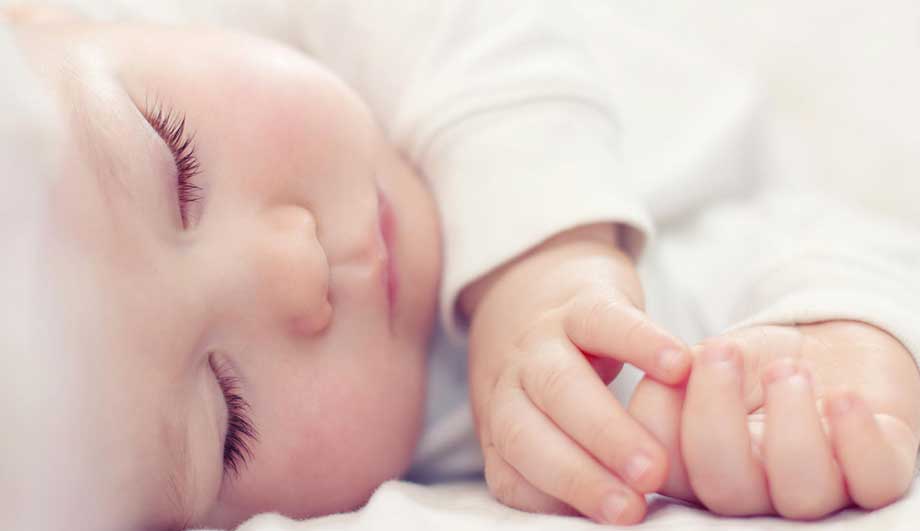
For full development, a child needs good sleep.
For sound sleep, it is important to follow the basic rules:
- put your child to bed at approximately the same time;
- the day should be filled with active games with sufficient physical activity and walks, the evening should be calm, with reading or drawing;
- the place to relax should be attractive;
- if the baby sleeps in a separate crib, you should not put him there to play - the crib should be associated with sleep;
- the air in the room where the child sleeps should be cool and humid, the baby’s clothes should be warm;
- bathing and massage in the evening will help the child relax;
- It is useful to create rituals (actions that are repeated every day), for example, bathing - reading - lullabies - sleep.
How many times a day should you put your baby to bed?
Up to two years of age, children can sleep once or twice a day. There are mothers who say that after a year their baby has completely given up daytime rest, and there is no way to persuade him to go to bed during daylight hours. But according to experts, a child normally needs daytime sleep.
In the question of how many times a one-year-old baby should sleep during the day, parents should focus on his well-being and activity. If it is difficult to put your baby into bed twice or he behaves restlessly at night, you should try to put him to bed only once, but not in the morning, but in the afternoon. And in these morning hours you can go for a walk.
When it comes to sleep, parents should focus on the needs of the child himself - some sleep peacefully for a long time, others need less rest to feel alert. By observing your baby, you can determine the optimal time for his daytime and nighttime sleep.
10 golden rules for peaceful children's sleep from Dr. Komarovsky - video
Feeding
At one year old, a child’s nutrition is already very similar to that of an adult. The baby now has several teeth and is able to eat both liquid and solid food (gnaw an apple, carrot, cracker). To keep his appetite good, you should try not to give him anything except water between feedings. Although you should be flexible in this matter: children fed with their mother’s milk can ask for breastfeeding in between feedings, because breast milk is digested much faster than adapted formula.
Children aged one year usually eat 4–5 times a day, not counting supplements breast milk at the request of the child.
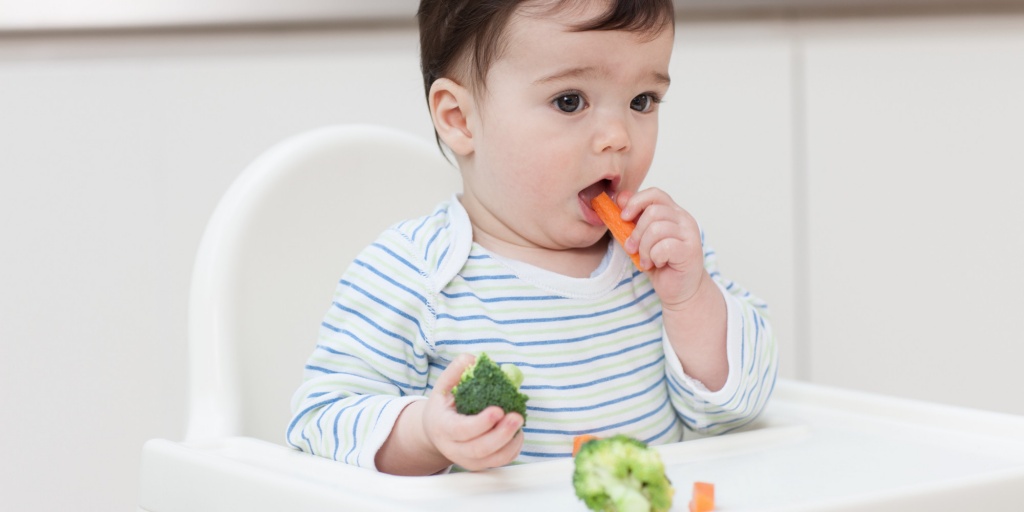
By the age of one year, the child already has teeth and can eat solid food.
After a year, many continue to breastfeed their baby, but mother's milk ceases to be the main product. Children who are on artificial feeding, are still supplemented with formula, but it is given no more than 1-2 times a day (in the morning after waking up and in the evening before bedtime).
The total amount of food per day for children from one to one and a half years old, excluding drinking, is approximately 1–1.2 liters (kefir or milk is considered food at this age, not drinking), from one and a half to three years- 1.3–1.5 l. Evgeniy Komarovsky urges mothers to observe moderation when it comes to food and not to force their child to eat everything he is supposed to eat according to the norm, since overeating has a bad effect on the digestive organs.
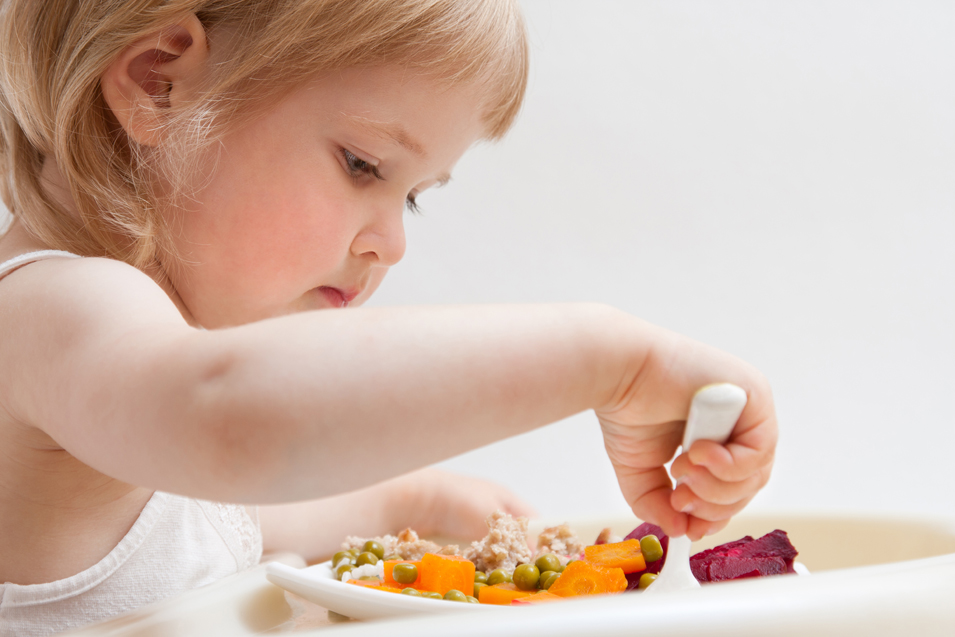
Menu one year old child should be balanced and useful
Dishes that can be included in the diet of a one-year-old child:
- dairy and dairy-free porridges;
- soups with meat, fish or vegetable broth;
- fish;
- steamed meat cutlets, meatballs, meatballs from beef, veal, turkey;
- salads (fresh cabbage, grated carrots, vinaigrette);
- steamed vegetables (potatoes should not be given more than 2-3 times a week);
- rye or wheat bread, crackers;
- pasta;
- kefir, yogurt, yogurt;
- fruits, fruit puree;
- berries (in moderation).
Almost all doctors do not recommend giving cow's milk to babies under 8 months and introducing crumbs into the diet with caution after a year (starting with one spoon diluted with water). And according to foreign experts, it should not be offered to children under two years of age. It is considered a strong allergen. Dr. Komarovsky explains the harmful effects of cow's milk due to its high phosphorus content (which is 6 times more than in women's milk). The metabolism of this substance in the human body is associated with the metabolism of calcium, as a result of which the level of calcium in the blood decreases, and, therefore, bones grow worse. It is much healthier to give a one-year-old child kefir or yogurt.
Nutritional standards for a one-year-old child (calculation for one day) - table
| Kefir, milk or mixture | 500 ml |
| Cottage cheese | 50 g |
| Porridge | 150–200 ml |
| Vegetables | 250–300 g |
| Fruits, puree | 200 g |
| Meat (turkey, veal, beef) | 70–80 g |
| Fish | 30–40 g |
| chicken egg | 1 piece |
| Quail egg | 2–3 pieces per week |
| Rye or wheat bread | 20–40 g |
| Butter | 15–20 g |
| Cheese | 5 g |
| Sour cream (cream) | 5–10 g |
| Vegetable oil | 6 ml |
| Sugar | 30–40 g |
| Salt | 2–3 g |
What does the baby do when he is not sleeping?
The periods of wakefulness of a one-year-old child are quite long (3–5 hours). The baby walks outside and is given a bath before bed. The rest of the time is devoted to games, improving and acquiring new skills, and getting to know the world around us.
The child’s games are already very diverse: he knows how to handle blocks, cars, dolls and soft toys, tries to assemble towers from a construction set with large parts, studies children's musical instruments. The baby loves when they tell him something, looks at pictures in books, points at them with his finger, makes exclamations and listens to fairy tales. With it you can start sculpting from salt dough, teach him to draw with pencils under the supervision of an adult. Repeating the movements of the parents, the baby does simple exercises or comes up with problems for himself (crawls under the table, crawls over sofa cushions, etc.).
Walks
One-year-old babies are just learning to walk or are already doing it well. They are active on the playground or in the park, play in the sandbox and watch other children.
Walking in winter depends on how hardened and accustomed your child is to fresh air. At a temperature not lower than -10 0 C, a one-year-old baby can usually spend from 40–60 minutes to an hour and a half in the fresh air. You shouldn’t protect him too much from frost: children’s metabolism goes faster, they warm up better, and often when mothers get cold while walking, their children feel very good.
In summer, it is also worth monitoring the temperature outside and spending morning (from 9 to 11) or evening (from 17 to 19) hours outdoors. Accustoming to the sun should be gradual, starting from 5 minutes. There must be a Panama hat on your head.
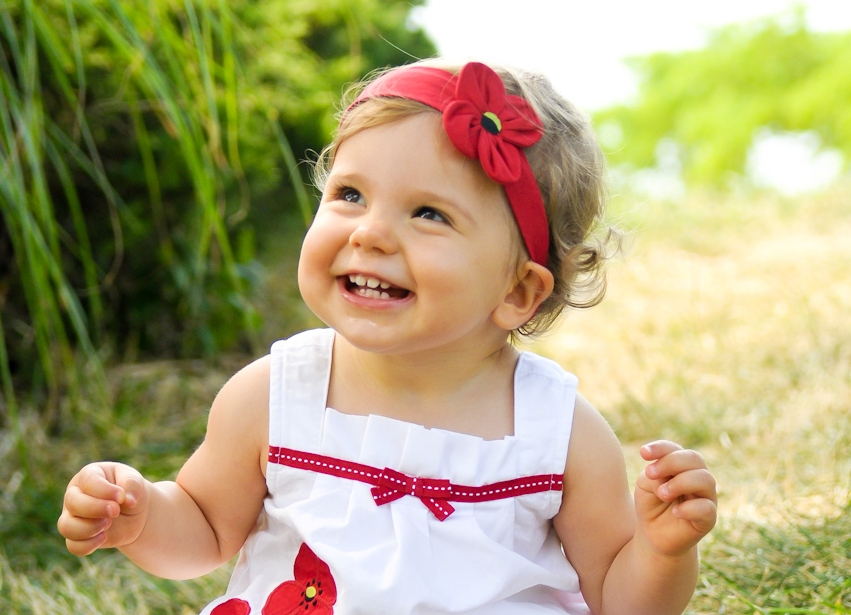
Walking outdoors should be done daily, regardless of the weather.
Bathing
Russian doctors recommend bathing a child daily or every other day in a large bathtub, pouring water so that he can sit in it and play with toys. Swimming is not only cleanliness, but also hardening, as well as relaxation, stress relief, rest, which is very useful after a whole day of exploring the world and communicating with people.
Interesting fact. In Germany, it is customary to bathe children once a week; doctors consider this more beneficial for the skin.
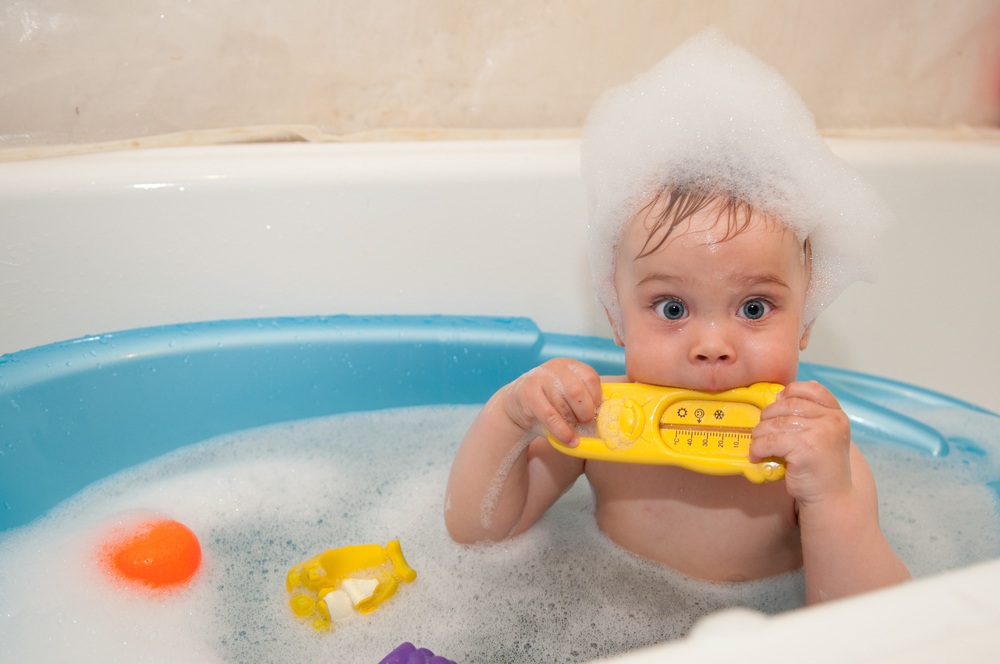
Lots of fun in the bath
Hygiene procedures in the daily routine
The child gets used to a lifestyle that is repeated day after day. If you always wash your hands before eating and after walking, this rule becomes familiar to him and does not cause objections. Now that the baby is more conscious and understands many words, it’s a good time to teach him useful hygiene skills. Include in your daily routine what you want to teach your baby. In the morning you should wash your face, wash your bottom and change your diaper. Contaminated hands should be washed with soap. At this age, you can introduce your toddler to the potty, keeping in mind that he will consciously use it after two years.
When a child’s first teeth appear (and by the age of one there are already eight!), you can introduce him to a toothbrush. This is a slow process, so don't rush things, but gradually introduce brushing into your daily routine.
Sample daily routine
When thinking about a child’s daily routine, adults usually look for answers to the following questions:
- when and how long should a child sleep during the day;
- how many times a day should he eat and what food does each feeding include?
- at what time of day should I take him for a walk and for how long to walk;
- how often to bathe him;
- what to do during periods of wakefulness;
- what hygiene procedures should be introduced into the daily routine.
The main thing in the regime is consistency. The baby gets used to the following activities one after another.
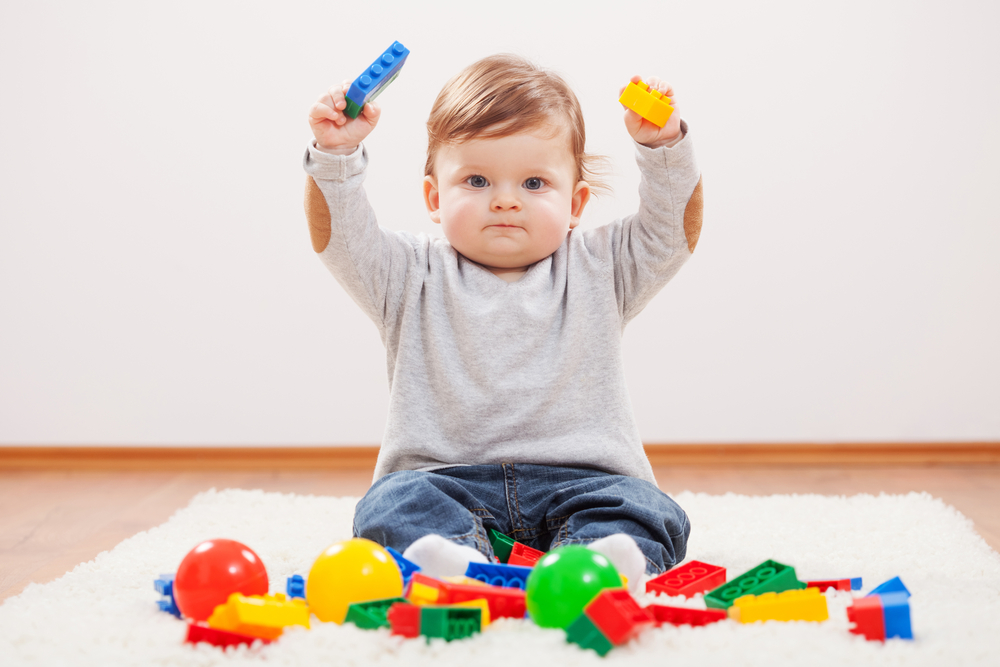
A properly structured daily routine will allow the baby to fully develop
Approximate daily routine for a child from one to one and a half years old (if the child sleeps twice during the day) - table
| 7.00 | |
| 7.30 | breakfast |
| 8.00–10.00 | active/quiet games |
| 10.00–12.00 | first nap |
| 12.00 | dinner |
| 13.00–15.00 | walk |
| 15.00 | afternoon tea |
| 16.00–17.30 | second nap |
| 17.30 | dinner |
| 18.00–20.00 | active/quiet games |
| 20.00 | bathing |
| 20.30 | feeding before bed |
| 21.00 | night sleep |
Approximate daily routine for a child from one year to one and a half years (if the child sleeps once during the day) - table
| 7.00 | getting up, hygiene procedures |
| 7.30 | breakfast |
| 8.00–11.00 | active/quiet games |
| 11.00–12.45 | walk |
| 12.45 | dinner |
| 13.00–16.00 | nap |
| 16.00 | afternoon tea |
| 16.00–18.00 | walk |
| 18.00 | dinner |
| 18.00–20.00 | active/quiet games |
| 20.00 | bathing |
| 20.30 | feeding before bed |
| 21.00 | night sleep |
How to accustom a one-year-old child to a routine
The famous pediatrician Evgeniy Komarovsky advises, when establishing a regime, to be flexible, take into account the interests of adult family members, not scrupulously adhere to sleep hours, but also remember how much rest a child should have per day at approximately this age. If it lies too long during the day, don’t wait Good night. And if you need to change the schedule, do it smoothly, gradually shifting the hours of your usual routine to avoid stress for your baby.
A year is an important date in a child’s development. Until recently, he was carried in his arms, but now he is already walking or mastering this important skill, energetically exploring the apartment and the things around him, and meeting new people. The baby's activity significantly changes his routine. The above recommendations and tips will help you during this troublesome time and make your days with your baby joyful and eventful.
Just yesterday, the one-year-old toddler was a little fool. But time flies quickly, the child grows, and along with him his needs increase. At the age of one year, the baby will require much more attention and activity from his parents than before. In this regard, certain changes appear in the daily routine of yesterday’s baby. There is a need to organize longer walks and varied play activity, daytime sleep time is reduced, and the intensity of interaction with others increases.
In the daily routine of a one-year-old, changes appear in all regime moments. More time will be needed to organize leisure and physical activity.
Sleep and wakefulness
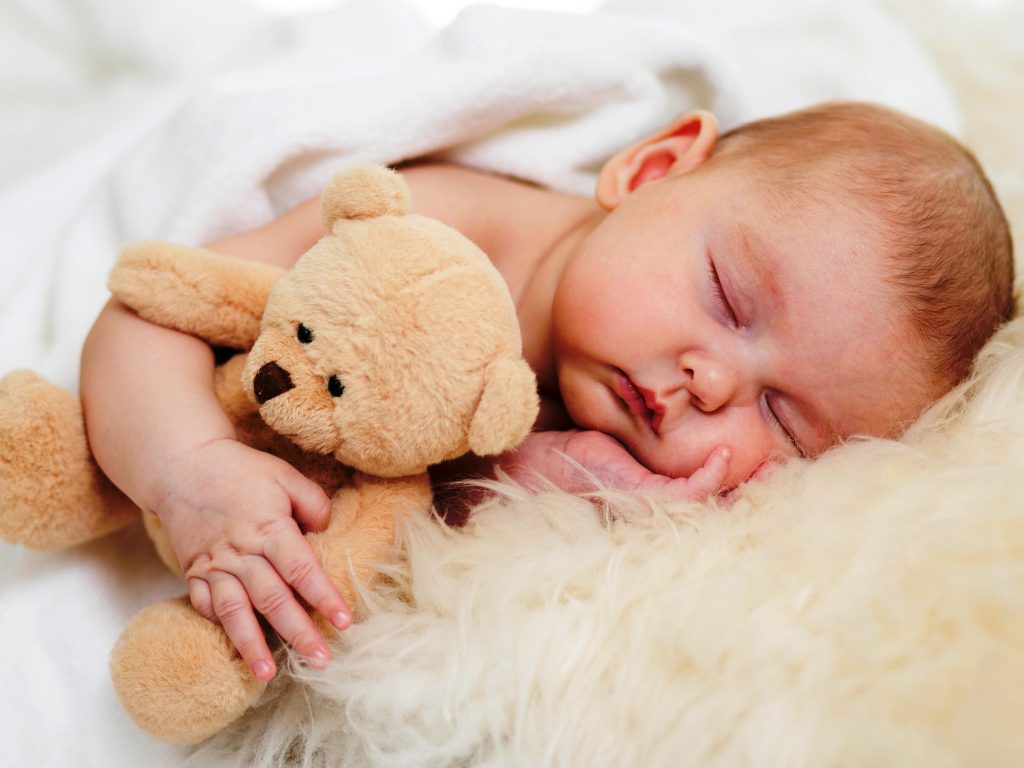
Child's sleep and wakefulness
Sleep patterns are traditionally given an important place at 1 year of age. At this age, children should be put to bed at least 3 times a day. Sleep should be 15-16 hours, of which 3-4 hours are for daytime rest. After a year of life, the child is supposed to sleep in the morning and afternoon.
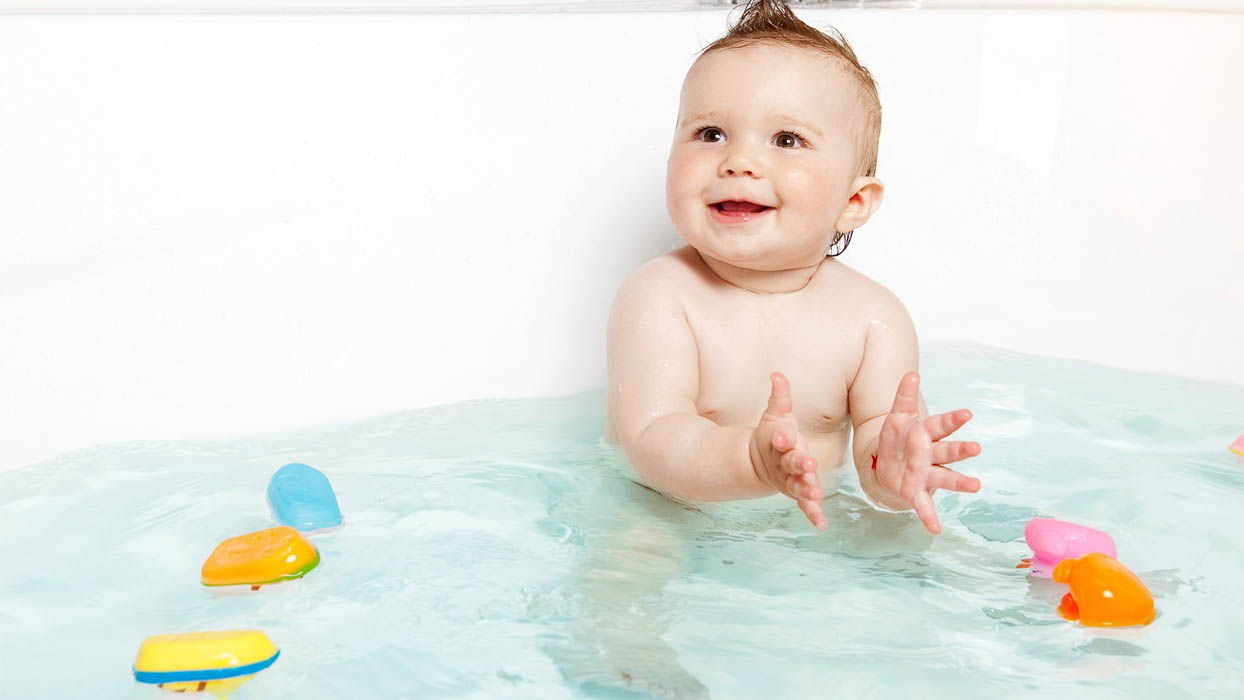
Hygiene procedures and bathing the baby
Carrying out hygiene procedures is still an important daily activity. The frequency of bathing is reduced to 1 time every 2 days. Baby products with minerals and herbal extracts added to the bath will have a good caring effect. In addition, parents should begin to develop basic hygiene skills. At the age of 1 year, children are able to understand that brushing their teeth, washing their hands and washing their hands are mandatory everyday actions. Over time, they will develop into a healthy habit.
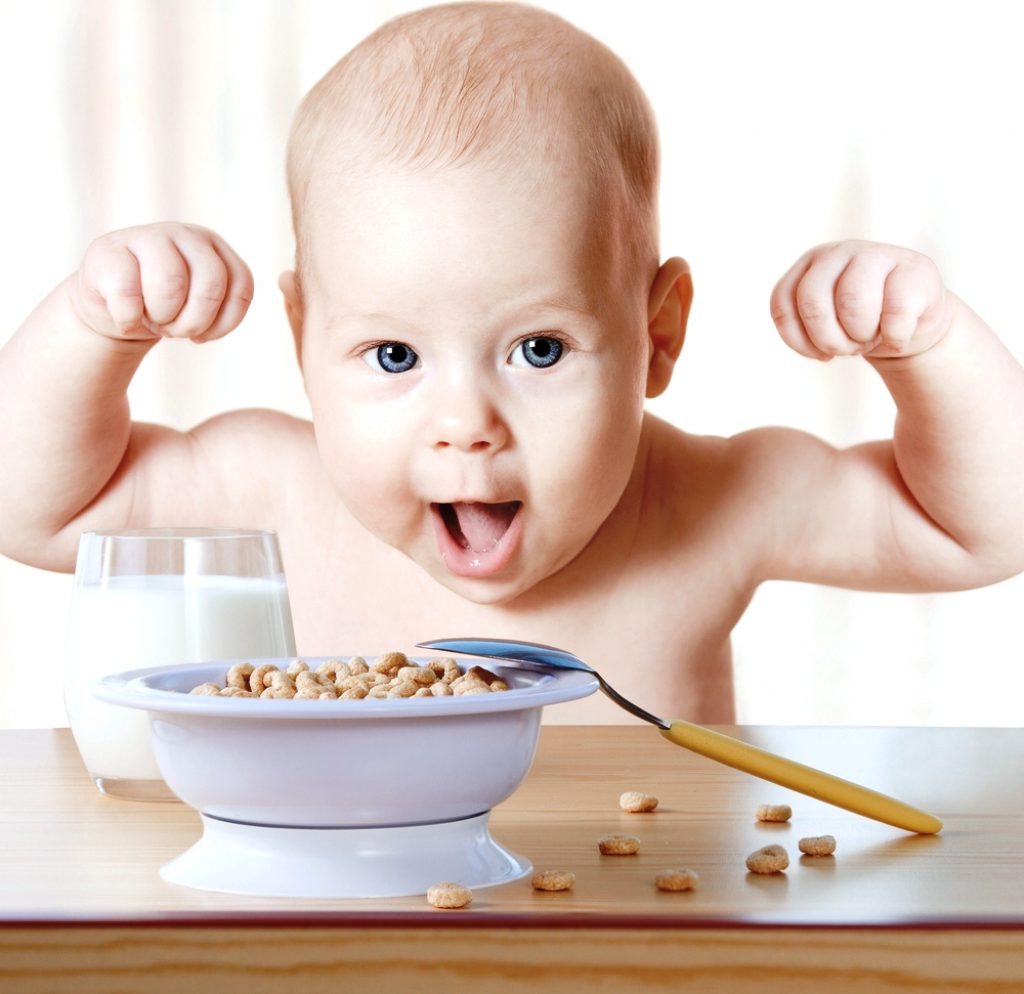
1 year old baby's food intake
The number of meals is 4-6 during the day. The most important are the main four feedings. The breaks between them last about 3 hours.
One-year-old children can already become familiar with cutlery and their proper use. The first one will be a spoon. The child should be able to eat thick and liquid food with its help. For adequate nutrition, the baby should receive 1000–1200 g of food every day.
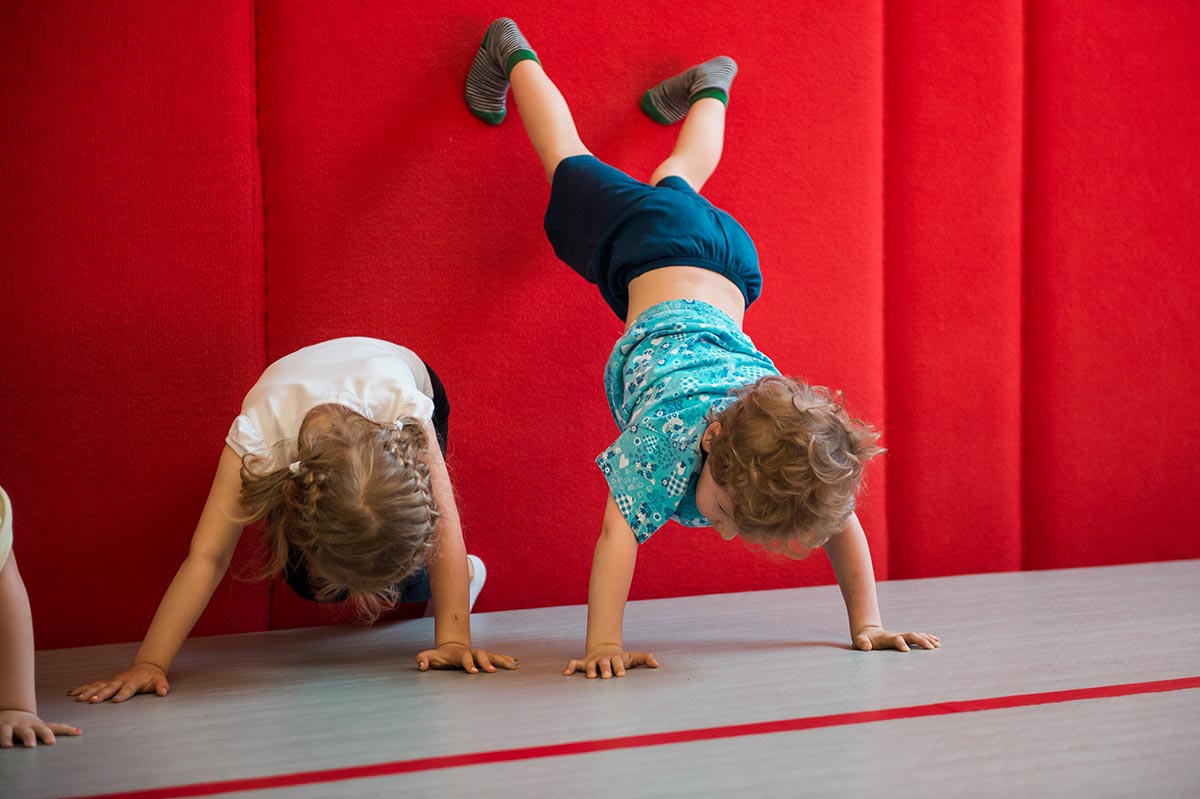
Baby's physical activity
A new part of the daily routine will be morning exercises. A 12-month-old child needs constant building and strengthening muscle mass. In most cases, children at the age of 1 year are already able to walk, squat and bend. You should gradually teach your child to do such exercises in the morning. This procedure should become an important part of his daily regimen.
Exercise with your baby should be done in a well-ventilated room. To make them arouse joy and enthusiasm, it is better to conduct them with cheerful, energetic music.
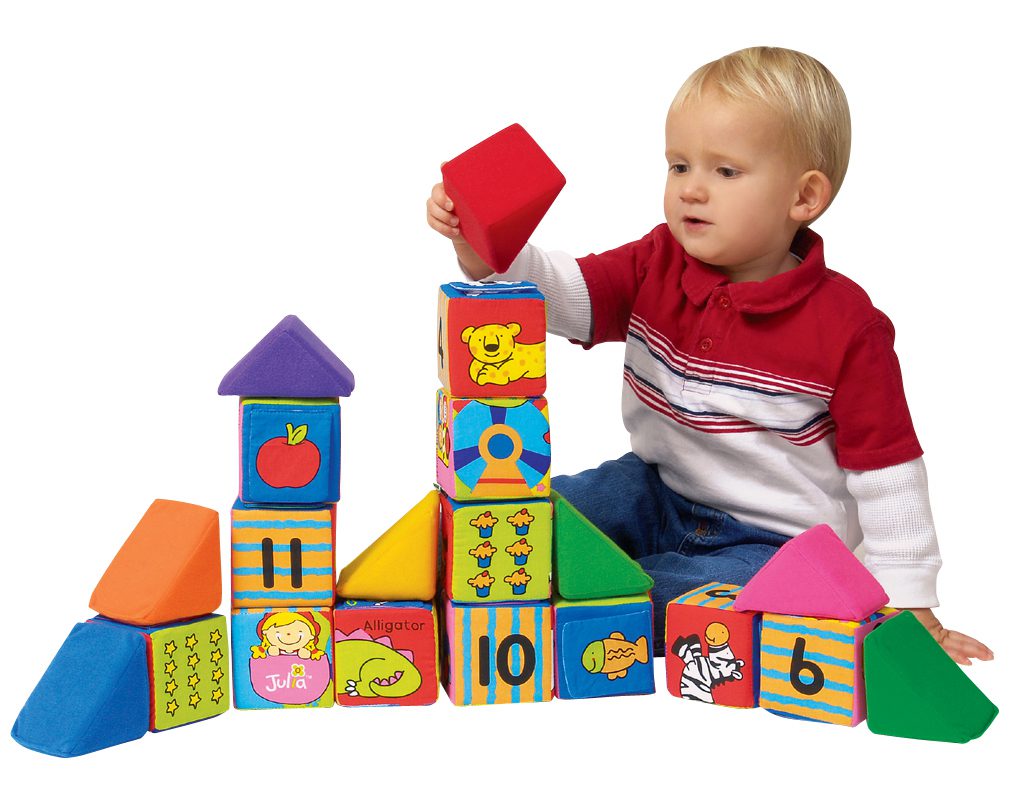
Educational toys for baby
Parents should take care of purchasing educational toys for their one-year-old toddler. For a complete mental development he will need an impressive gaming kit:
- sets of cubes (wooden, plastic, soft);
- nesting dolls, insert games, pyramids;
- toy musical instruments;
- educational sensory mats;
- puzzles and lotto for the little ones;
- rubber figurines of animals, birds, insects;
- toys - gurneys;
- balls different colors and sizes
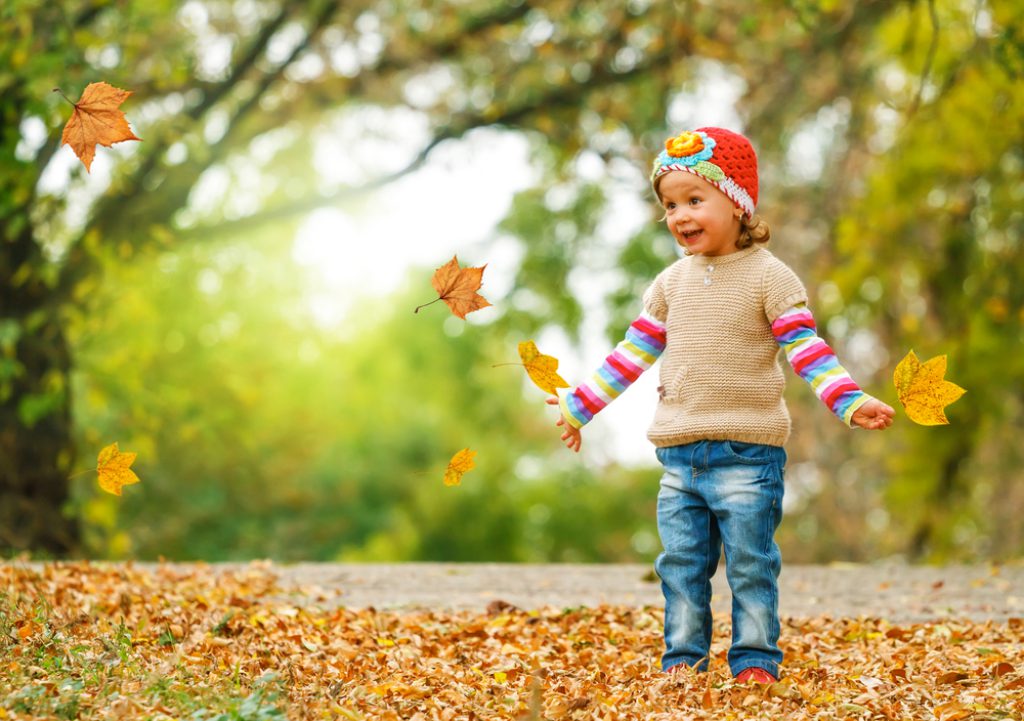
Walking and playing outside with your child
- The baby's daily routine includes mandatory walks and active games on the street. They will be a great way to spend time. At this age, the child becomes an active explorer of the environment. Walking with adults, he will be able to make new discoveries every day. For walks, you should choose areas that are located away from dusty roads and noisy areas of the city. Cozy courtyards, parks and public gardens are suitable for this purpose.
Approximate daily routine for a one-year-old child
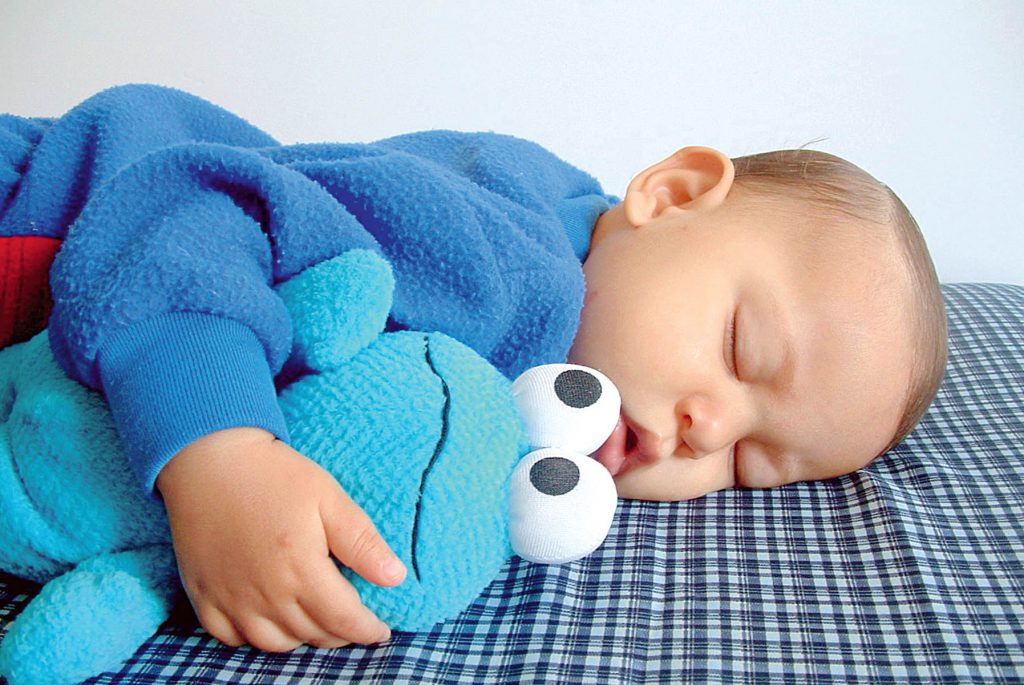
Daily routine of a one-year-old child
- A year old's daily routine by the hour may look like this:
| Time lapse | Type of activity |
| 7.00 — 8.30 | Lifting, exercise, water procedures |
| 8.30 — 9.00 | First breakfast |
| 9.00 -10.00 | Game activity |
| 10.00 -10.30 | Second breakfast (light) |
| 10.30 — 12.00 | First walk, games, sleep outdoors |
| 12.00 — 12.30 | Dinner |
| 12.30 -15.00 | Gaming activity, communication |
| 15.00 -16.30 | Walk, nap |
| 16.30 -17.00 | Snack |
| 17.00 -19.30 | Gaming activity, communication |
| 19.30 -20.00 | Dinner |
| 20.00 -21.00 | Communication, preparation for night sleep, taking a bath (once every 2 days) |
| 21.00 -7.00 | Night rest |
Sleeping and waking patterns at 1 year of age will change as the baby develops and grows. These changes should not be sudden, but should be introduced gradually. The little one must have time to get used to and adapt to them. For parents, the main indicator of a successfully organized daily routine will be high spirits and moderate activity.
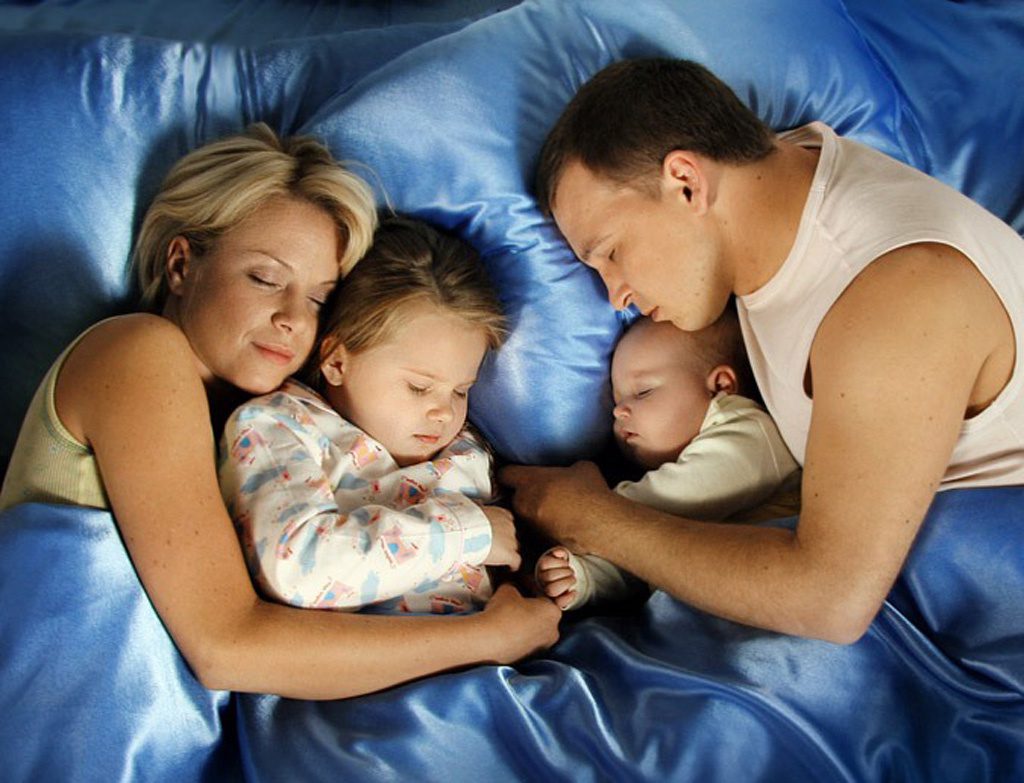
- Parents should add more variety to their daily routine, because at this age their child expects much more from them. It is very important to encourage your child’s every attempt at independence. Purchased in early age these skills will greatly facilitate his upcoming adaptation to preschool.
- At the age of one year, a child should be able to fall asleep on his own, without the help of his mother. In order for him to fall asleep quickly in the evening, you need to prevent him from being overly active shortly before bedtime. If the little one is awake at a fairly late hour, it’s worth playing with him in interesting game, then move on to a bath in soothing herbs and end the day with a gentle bedtime story.
- Water procedures should not be limited to just washing; the child will become much more interested in water games and swimming. The child’s independent attempts to wash himself, wash his hands and use a towel should be strongly encouraged. Massage is still necessary. It will bring particular benefits after water procedures in combination with special oils.
- If your one-year-old is still using a pacifier, it is better to wean him off it. At this age, she can ruin her bite and in the future the baby will not be able to pronounce some sounds.
- At this stage, the baby’s speech begins to form, which will require the most attentive attention from adults. Each independent action should be noted with verbal praise. It is also necessary to comment out loud on all the events in his life.
- Following a daily routine disciplines, teaches order, and helps improve the baby’s immunity and health. For his parents, this will be an opportunity to remain always energetic and full interesting ideas for every new day.
Contents of the article:
When a baby turns one year old, many parents think that his life should change dramatically. Serious adjustments should be made to the usual way of life if its regime and daily routine are far from what is needed by the growing body.
One mother may find it convenient to let her baby fall asleep late at night and then give her the opportunity to sleep longer in the morning. At the same time, the baby’s breakfast smoothly turns into lunch, and play activities are mainly devoted to evening time. Another mother is fanatical about walking outside, which often delays lunchtime and the baby’s nap. Why is it so important to get the 12 months right?
Dependence of baby's health on lifestyle
In the first year, it’s easy to train a little creature to wake up with the first rays of the sun, eat at noon and go to bed around nine o’clock in the evening. The baby’s body itself adjusts to live according to a schedule, so every day the baby will feel when it’s time to wake up, when it’s time to eat, when it’s time to go for a walk, and when to rest.
Such constancy has a beneficial effect on the psychological and physiological state of any age. The baby is not inclined to be capricious in vain, and is distinguished by a calm and high spirits throughout the day.
Deviations in the schedule lead to the fact that the baby cannot cope with his emotions. Parents often look for reasons impulsive behavior, tearfulness or lethargy of the child due to temperamental characteristics or omissions in upbringing. Irrational distribution of time of day for sleep, eating, active games and quiet activities is fraught not only with mood swings of the baby.
A disrupted routine affects the ability to concentrate on something important, grasp information, understand the essence of what is heard, and fulfill basic requests from parents. To avoid this outcome, you should choose the optimal regimen for your baby, which will satisfy all the needs of his immature body.
Typical daily routine for a 12 month old baby
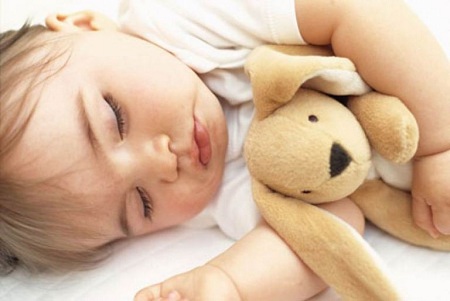
Children's daily routine may be slightly different at one year of age. The essence of the difference is that in one family the baby wants to sleep twice a day - in the morning and in the afternoon, while in another - the baby prefers one nap - in the afternoon. For comparison, below is the generally accepted daily routine of such babies:
| Daily routine | If you nap twice a day | If the daytime nap is one-time | ||
| Waking up, toilet, washing, exercise | 6.30/7.00 | 7.30 | 7.00/7.30 | 8.00 |
| Breakfast | 7.30 | 8.00 | 8.00 | 8.30 |
| Wakefulness (games/walk) | 8.00 | 9.30 | 8.30 | 12.00 |
| Lunch | at a convenient moment while awake | |||
| Dream | 9.30 | 11.30 | -- | -- |
| Dinner | 11.30 | 12.00 | 12.00 | 12.30 |
| Games / educational activities / walk | 12.00 | 15.00 | -- | -- |
| Dream | 15.00 | 16.30 | 12.30 | 15.30 |
| Afternoon snack | 16.30 | 17.00 | 15.30 | 16.00 |
| Games/developmental activities/walk/bathing | 17.00 | 19.30 | 16.00 | 19.30 |
| Dinner | 19.30 | 20.00 | 19.30 | 20.00 |
| Quiet games/reading | 20.00 | 20.30 | 20.00 | 20.30 |
| Getting ready for bed, sleep | 20.30 | 6.30/7.00 | 20.30/21.00 | 7.00/7.30 |
It is not necessary to follow the described regime minute by minute. This is just a guide for new parents who want to develop the most beneficial daily routine for their beloved little one or princess.
A little more about the child’s activities per year
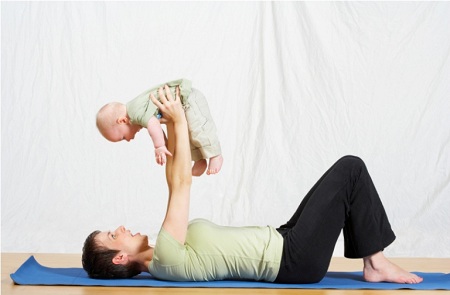
Morning workout
Massage, air baths, gymnastics or exercises for the baby in a well-ventilated room are the key to a cheerful mood after waking up and a charge of positivity for the whole day. And the fun exercises carried out with the baby in game form, will never be a burden to him. What a child at this age can do and like:
- Walking. To prevent such an activity from turning into boring wandering around the room, and to prevent the child from falling if he is not yet walking very well, give him a stable doll stroller or gurney. In addition, teach your child to march in place. Choose rhythmic children's songs as the musical accompaniment.
- Crawl. Get on all fours with your baby, slowly, crawl around the room on your knees and imitate animals with him, making funny sounds.
- Crawling over obstacles and crawling under them. In the first case, a strong box about 10 cm high will do, and in the second, a children’s table. Place a toy on the opposite side of the obstacle - this way the baby will understand exactly where and why to crawl. Surely, during the first year of life, the baby fell in love with one of the toys most of all. So choose it - it will be the greatest incentive for the little athlete to go through all the obstacles to the goal.
- Stepping over objects. At the first stage, select low obstacles, such as cubes or a small ball. Show your child how to step over these objects. Once he can easily overcome low obstacles, complicate the task - show him how to step over a box or narrow box.
- Squats. Grab a hoop or stick with your child and, on the count of three, squat together and slowly stand up. Repeat the squat several times.
- Throwing the ball. Throw a light ball to each other and ask your child to fetch it if he rolls away.
When doing exercises with your little miracle, do not forget to smile, encourage him and praise him for his success. If you notice your baby's fatigue or lack of interest in the chosen exercise, simplify or change the task.
Features of catering
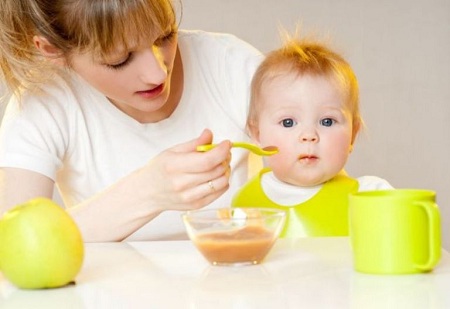
Replenish energy after physical activity (morning exercises or walks in the fresh air) you need healthy and satisfying food. A healthy, strong person is ready to absorb about 1000-1200 g of food per year for the entire daily intake.
The diet of a one-year-old toddler should include 4 main meals. The menu must include:
- porridge (buckwheat, oatmeal, rice, barley, corn)
- meat and fish dishes (in the form of baked or steamed meatballs and cutlets)
- vegetables (stewed, boiled, crushed into a puree, in soup or as a salad, where the vegetables are grated on a coarse grater)
- fruit and cottage cheese casseroles
- chicken or quail eggs (boiled or in the form of an omelet).
For second breakfast, fruit or yogurt with baby cookies are perfect.
The following foods should not be present in the diet of a child over one year old:
- smoked meats
- sausages
- fried foods
- mushrooms
- rich meat broth
- spices
- desserts with chocolate and sweets with cream.
Alternation of sleep and wakefulness
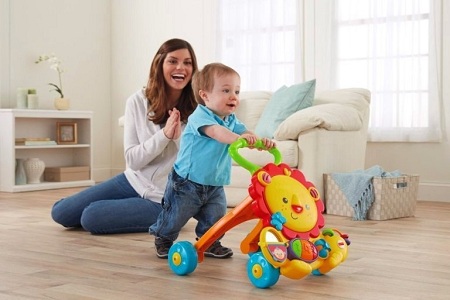
The role that good sleep plays in the development of a small creature is difficult to overestimate.
In total, a one-year-old baby should sleep 13-14 hours a day, of which 10-11 hours at night. Most babies need morning and afternoon naps by 12 months, and by the age of one and a half years they switch to one nap. Children usually maintain this daily routine even in preschool age. It is better to put a child who sleeps once a day to bed earlier in the evening, rather than driving him to the point of impotence so that he can sleep longer in the morning.
Develop a bedtime ritual with your baby. In a word, the baby should get used to calming down every evening before bed, washing, brushing his teeth and going to bed. This way, he will always be mentally prepared for what awaits him.
It is important to teach your toddler to fall asleep on his own during the first year of life, without rocking, lullaby or feeding. Otherwise, the process of falling asleep may be delayed, or the baby, not finding you next to him in the middle of the night, will start calling you and crying, which will interrupt his sleep.
An hour before bedtime, collect toys with your baby, read interesting children's stories to him, or let him enjoy a bath in a warm bath. Please note that active noisy games before bedtime are unacceptable.
The morning time after hygiene procedures, exercises and breakfast is best suited for outdoor games, developmental tasks for intellectual development your child, as well as educational walks with parents in the fresh air.
Raising a baby is not easy for everyone, but everyone can make the growing up period exciting for everyone. Just a few efforts until a stable routine is established for your little one, who is one year old, and everything will go like clockwork.
In secret...
Probably every woman faces the problem of being overweight? After all, sometimes it’s not easy to lose weight, look slim and beautiful, or trim your sides or belly. Diets don’t help, you don’t feel like going to the gym or it doesn’t bring tangible results.
Therefore, we recommend reading the story of Irina Dubtsova, who managed to get rid of excess weight quickly, effectively and without expensive procedures....
In the first year of his life, the baby has already learned a lot. In his vocabulary there are several of the most simple words- “mother”, “woman”, “bi-bi”, “meow”, “give”. He knows the names of parts of the body, face, favorite toys, can point to them upon request, distinguishes the intonation of speech, and can dance or sway to music. He reacts joyfully to the appearance of familiar faces, waves his hand when saying goodbye, blows kisses, and imitates the actions of adults.
By this period, his mobility and curiosity increase. He climbs onto the sofa, walks around the rooms, looks into secret corners. He can move both on all fours and stand on his legs. He likes to “manage” in the kitchen: open cabinet doors, examine the contents of jars and boxes. The kitchen is a rather dangerous place, so you can’t leave your baby alone in it. By the age of one year, the child tries to hold a pencil in his hand, he really likes to draw. Therefore, during this period, his first scribbles appear on a piece of paper or wallpaper.
Many kids love to have books read to them, shown bright pictures. If the child does not sit still, you can talk and read to him while he is playing, for example, assembling a pyramid, looking at cubes. Even if he doesn’t pay visual attention to you, he involuntarily absorbs your words like a sponge.
Child care for 1 year old
Every day the baby becomes more and more independent. He already drinks from a cup himself, tries to eat with a spoon, even if he doesn’t always succeed neatly. The role of parents in caring for a child comes down to teaching him self-care skills, monitoring his routine, nutrition, hygiene, and health.The child most likely does not always ask to go to the potty on his own. To speed up this process, it is necessary to place him on this hygienic “throne” after meals and every hour and a half. Gradually he will develop a habit, and if you forget to put him there, he will ask you about it.
It is necessary to monitor his hairstyle so that his bangs do not get into his eyes. Trim hair and growing nails in a timely manner. Children usually do not really like this procedure, so it can be combined with a game.
The room where the baby plays and sleeps must be frequently ventilated and wet cleaned. Make sure there are no drafts, and play corner there was a carpet laid on the floor. Plastic toys must be washed periodically with soap. In order to gradually accustom the child to order, after playing, all toys must be put in a box or placed on a shelf. At first you need to do this together with the baby, then he will be able to cope on his own.
Nutrition for a 1 year old child
For the first six months after his birth, the baby was fed exclusively on breast milk or formula. Then vegetable purees, milk porridges, steamed cutlets, cookies and other “adult” foods were gradually introduced into his diet. He got his first teeth and learned to chew. But this does not mean that he is ready to eat food from the common table.At 1 year old, food for babies also needs to be prepared separately. It is served pureed or finely chopped. At one year of age, a child should already be familiar with such products as chicken or quail eggs, potatoes, pasta, oatmeal, rice, buckwheat porridge, raw and boiled vegetables and fruits, minced meat (steamed cutlets, baked soufflé), bread, butter, dairy soups. You can add chopped herbs to your diet - parsley, dill. The food is not fried, but boiled, steamed or cooked in the oven. Solid vegetables and fruits are served to the child pureed (apples, pears). Bananas, soft pears, can be cut into small pieces, peeled. It is recommended to give cherries, plums, and cherries boiled, in the form of purees and compotes.
The stomach of a one-year-old baby is small, but the body requires a lot of energy. Therefore, the child must be fed in small portions, but often. Five times per day: breakfast after waking up, lunch, afternoon snack, dinner and milk or kefir with cookies at night. After about six months, you can switch to four meals a day, giving up feeding before bedtime. If a child has a poor appetite, brightly colored dishes, napkins, or beautifully decorated food on a plate will help awaken him.
1 year old child's daily routine
A year is the age when you can start developing home rituals and traditions with your child that will accustom him to a routine. They will give him a sense of constancy, will calm him down and tune him in. certain actions. For example, he will normally perceive that after a night's sleep he needs to brush his teeth and do exercises. They need to be repeated at the same time over a long period. For example, in bed, before bed, read a book or kiss goodnight.If the baby does not like to sleep during the day, after waking up he definitely needs to do something pleasant - feed him a delicious afternoon snack, give him sweets, play with him, allow him to be a little naughty. Knowing that something interesting awaits him after sleep, he will quickly get into bed and fall asleep.
You shouldn’t set a routine like in a pioneer camp and schedule your child’s day minute by minute. Look at his mood, well-being, sometimes you can deviate from the planned schedule. The regime must be adjusted as the baby grows older. Introduce additional points and remove those that are no longer relevant. For example, increase the time for walking, playing, reduce the duration of daytime sleep, etc. The main thing is to maintain consistency - sleep, wakefulness, play, food and maintain intervals between feedings - approximately 3-4 hours. By obeying the daily routine, the child will have enough time to both rest and be awake. He will be less tired and capricious.
Activities with a 1 year old child
During this period, the child really likes to perform joint actions with adults, tries to help them and repeats the movements - sweeping, vacuuming, mixing food. He becomes familiar with his surroundings. He is interested in how the lights turn on, the phone rings, the music plays. He can perform the same actions several times. For example, flicking a switch while watching a light bulb, or pressing buttons on the TV remote control. He analyzes and tries to figure out how it works. Don't deny him this pleasure.During joint activities, talk to him, for example, when dressing the baby. Ask to stretch out the arm, raise the leg, bend the head. He will gladly help you dress yourself. At this age, you can teach your child to be neat - put his nose or mouth under a napkin or handkerchief. Hold out your hands to wash them.
At this time, the baby is easy to train. Therefore, introduce him to the world by explaining and telling accessible language how it works, why it happens, how to behave in different situations. You can watch the rain through the window, look at moving cars, walking people. Don't worry, even if your baby doesn't speak yet, he understands a lot and remembers the names of objects. Already at this age, you can introduce the baby to possible dangers - show that the needle pricks, it hurts, and the water can be very hot, so you can get burned.
Games and toys for children aged 1 year
Even if a child has a lot of toys - dolls, bunnies, bears, clowns, children's dishes, he still does not know how to play with them. He perceives them simply as objects. Therefore, he needs to be shown how to feed the doll, how to rock and cradle it in order to put it to sleep. You can ask him to take pity and stroke a plush kitten or bunny, because it hurts, his paw hurts. This is how the capacity for compassion develops.To develop logical thinking, by the year you can buy toys such as a pyramid, cubes, balls of different sizes and colors. The baby loves to play with them, trying with a concentrated look to string rings onto the pin of a pyramid or push a round ball into a square hole. And it is not at all necessary that he will do everything correctly the first time. Quite the contrary. Gently nudge him in the right direction by explaining how and why he needs to act that way.
To develop in the baby fine motor skills fingers, you can start playing the simplest nursery games with him - for example, “Magpie-Crow”. Bend and massage each finger, saying what the magpie should do. You can put a piece of soft plasticine in his hands and show how you can crush it in your fist or pinch off a piece with your fingers. You can pour cereals - semolina, millet - into the box and let the baby play. Let him gather it in his fists or let it pass through his fingers. Don't scold him if cereal spills on the floor; it can be collected with a vacuum cleaner in a couple of minutes.
Medical observation for 1 year
From birth the baby is under the supervision of doctors. Basically this is a local pediatrician and a nurse who looked after him physical development- height, weight, vaccinations. Now the baby has grown up, he no longer requires monthly supervision; one visit every two months will be enough.In order not to miss possible deviations in the state of health, it is recommended that he undergo an ultrasound of the hip joints, abdominal cavity, brain and undergo individual medical specialists. At one year old, he should definitely be shown to an orthopedic surgeon, ophthalmologist, neurologist, or otolaryngologist. It is advisable to get vaccinated against rubella, measles, mumps, and general analysis urine and blood.
If your child still does not speak by the age of one year, do not be upset and take this fact to heart. He will definitely speak, only a little later. All children are different and you should not expect exactly the same results from them. Much depends on the child’s temperament, his individual characteristics and other factors. Therefore, if your sandbox neighbor Vasya speaks almost in poetry, and your Andryusha or Tanechka knows only two words, it doesn’t matter. This does not reflect mental ability in any way, and does not affect future grades in school.
Don’t push yourself too hard and don’t demand the impossible from your child. Be patient and continue to nurture and develop it further. And remember that at one year old, your foolish fidget is at increased risk. Therefore, do not leave him alone for a minute. It is necessary to lift fragile vases and figurines upstairs so that the baby does not break them and get hurt, hide small and sharp objects, medicines, and close electrical outlets with plugs.
Sometimes children as young as 1 year have trouble falling asleep or wake up crying at night. One-year-old children should sleep about 13 hours a day. Daytime sleep at this age can be single, but long, or short, but repeated several times.
The baby has grown up, the daily routine gradually began to change, and with it the daytime sleep of a one-year-old child is being restructured. The baby is more awake during the day and sleeps less compared to the infant period. A certain regimen is beneficial for a child’s body. How much should a 1 year old baby sleep? - one of the important questions.
Sleep disturbance in a 1 year old child
One of the common phenomena at this age is sleep disturbance, which causes great difficulties for parents. The approximate duration of total sleep time for a one-year-old child should be 13 hours. How many times a child sleeps in one year will depend on his temperament. Some children sleep once during the day for several hours, others can sleep for 40 minutes several times. Poor sleep in a 1-year-old child is due to several factors. These include:
- emotional state;
- somatic problems;
- neurological problems;
- external factors and changes in diet.
Children with a balanced nervous system They are cheerful and cry little. Their sleep is deep and long. Other children are more excitable and whiny. Their sleep is very sensitive, shallow, and falling asleep takes a long time. This also affects why one year old child often wakes up at night. It is necessary to monitor entertainment before bed, which directly affects the quality of sleep. Somatic problems are based on diseases and ailments. It is necessary to consult a pediatrician to rule them out. The most common cause is gastrointestinal problems. Another reason why a child after a year does not sleep well at night is a lack of vitamin D. This makes him worry and shudder in his sleep. There may also be teething, which directly affects the quality of sleep. It happens that a 1-year-old child wakes up at night with hysterics. These phenomena can be repeated quite often during sleep. Sleep disturbances always occur when changing diet. Babies react very painfully to weaning. This violation is temporary and improves when a diet is established. External stimuli directly affect the quality of sleep. The baby will wake up from heat, cold, bright light, and an uncomfortable pillow. This may be the reason why a year old baby wakes up every hour at night. It is also necessary to observe how extraneous sounds affect it.
How to put a child to sleep at 1 year old?
Many children have trouble falling asleep, and the main reason is poor sleep patterns. An erratic routine during the day is the reason why a one-year-old child has trouble falling asleep in the evening. It is necessary to teach him to sleep at certain hours. You need to watch him, notice when and after what he falls asleep faster. Over time, an established habit of sleeping at the same time is formed. Laying techniques should be familiar to the child. Ideally, it will be installed by one person. The environment should be calm. It’s best if you find a way to teach your one-year-old child to fall asleep on his own. You can come up with a certain ritual and immediately after it put the child to bed. After these actions, he will be ready to sleep. For example, evening swimming or reading.
Why did my one-year-old child begin to have trouble falling asleep?
Insomnia has its reasons. The first is the lack of desire to sleep. A common cause is thirst and hunger. Perhaps the baby did not have enough daily ration. A child will not fall asleep if he feels hungry and uncomfortable. Uncomfortable clothes, wet diapers, bright light, noise are negative factors that interfere with sleep. It has been noticed that if there was increased physical activity before bedtime, it will be difficult for the child to fall asleep. Of course, the baby will not sleep if he is in pain. Your teeth, ears, and tummy may hurt. In a healthy, calm baby, the process of falling asleep always goes smoothly.



